PG's Chris Kies hung out with Dan Hawkins, Frankie Poullain, and Justin Hawkins of The Darkness before their gig at the War Memorial Auditorium in Nashville, Tennessee.
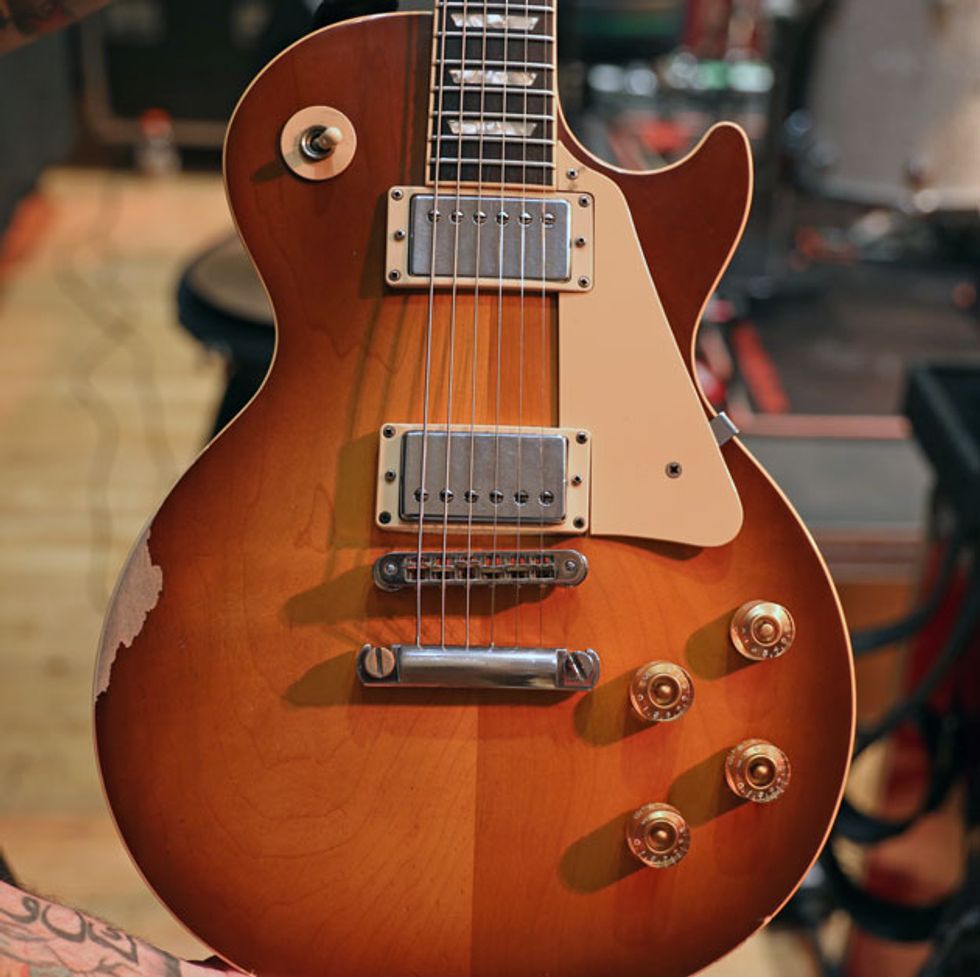
Rhythm guitarist Dan Hawkins received this 2000 Gibson Les Paul Standard—his current number one—from his brother Justin when the band started in 2000. Dan refers to this instrument as “Dune,” a tribute to one of his favorite sci-fi films that was directed by David Lynch. He left the stock 498 humbuckers in the guitar because he likes that they crank out an aggressive bite thanks to their high output. The only change he’s made to the guitar is adding a TonePros bridge and tailpiece for better intonation.
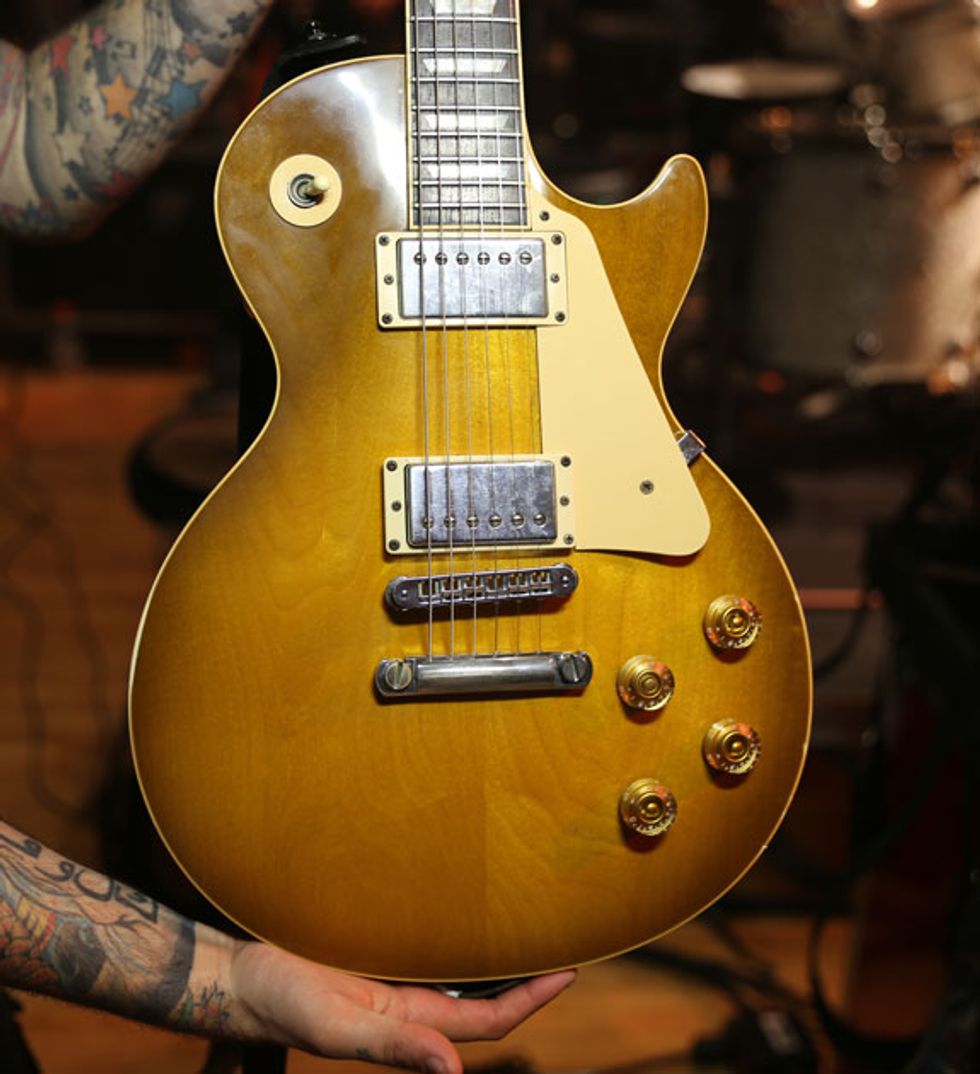
The second guitar Dan will carry onstage is another 2000 Gibson Les Paul Standard that has a much lighter, more subdued burst on its top. This particular guitar usually rides in drop-D tuning. Dan carries three guitars because he often hammers his thumb against the string causing them to go out of tune and blood to be spilled. This aggressive approach came from Dan’s time on his first instrument: the drums.
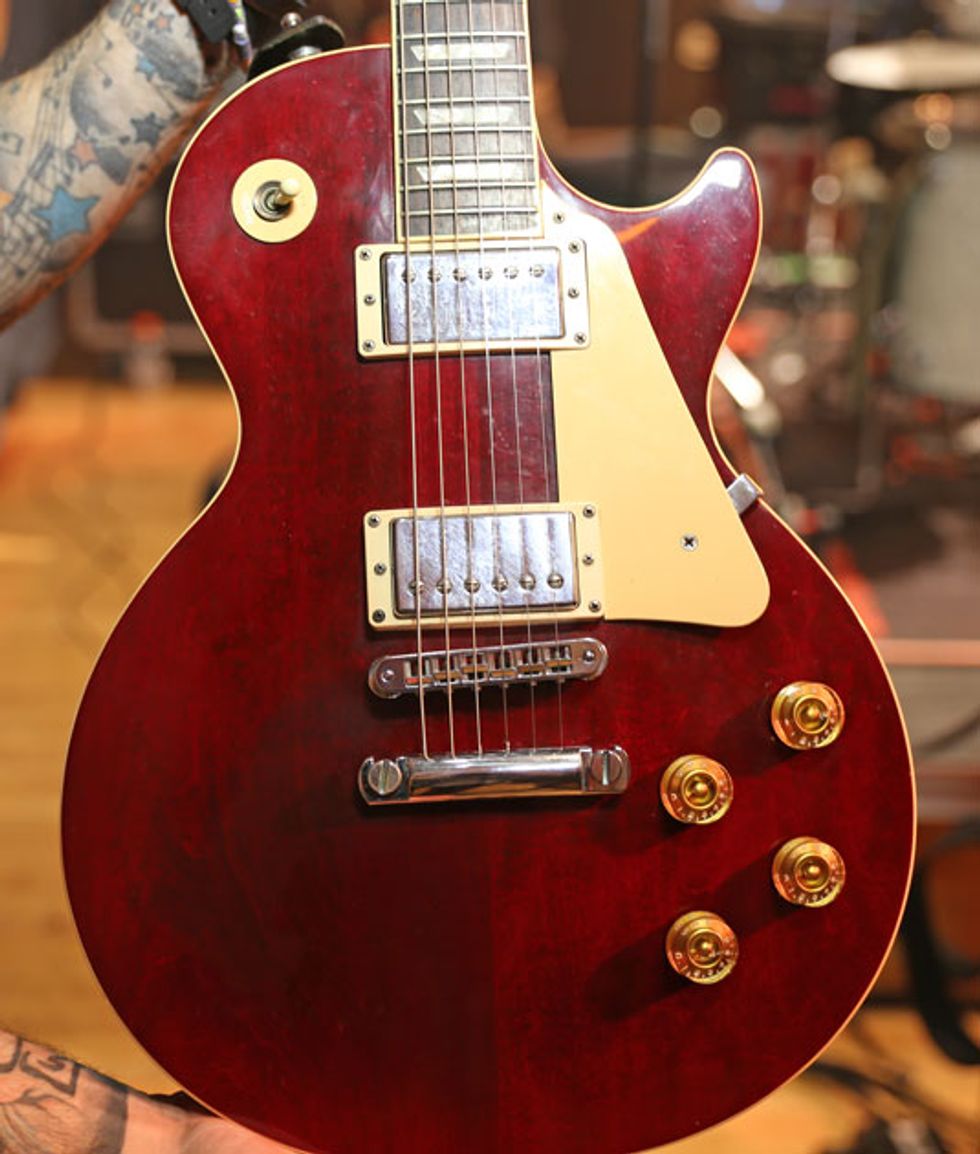
His third Gibson Les Paul Standard was made in 1997. He claims this LP is the brightest one of the bunch so he uses it for songs that require a janglier tone and a capo like “One Way Ticket to Hell and Back” and “Givin’ Up.” All three guitars are using Ernie Ball Beefy Slinky .011–.054 strings.
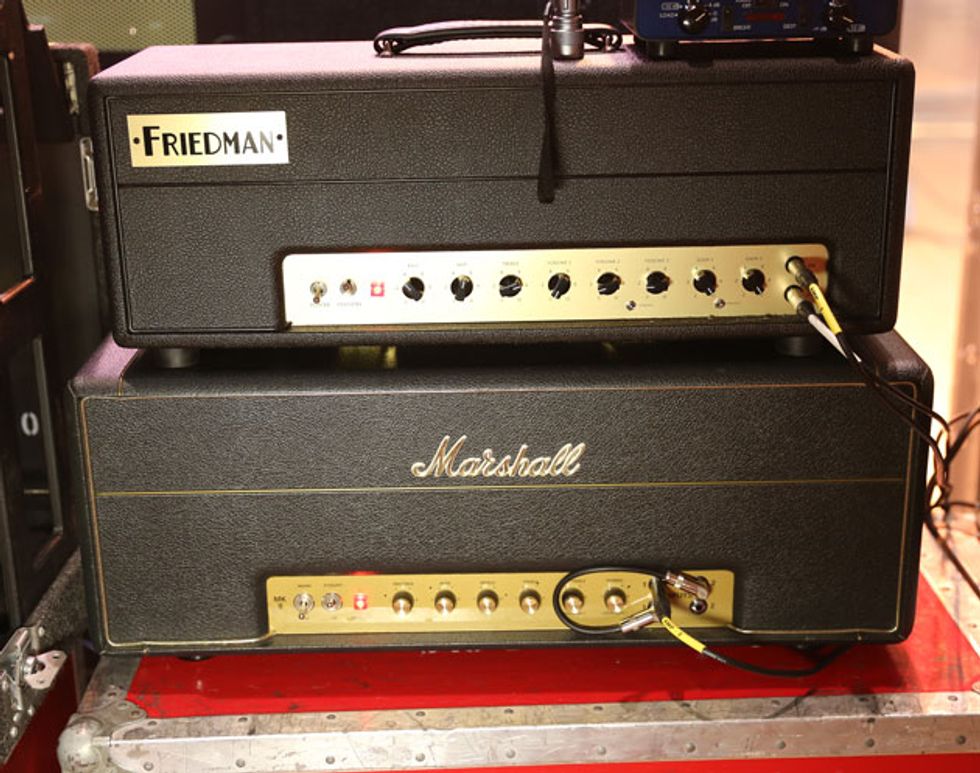
Hawkins’ main amp is a Marshall plexi 1959 Super Lead head that is always on, and always loud. The Friedman Small Box Head is still in the experimenting stages of Hawkins tonal equation, but he says he likes adding it into the mix as a solo boost and for chugging, palm-muted rhythms.
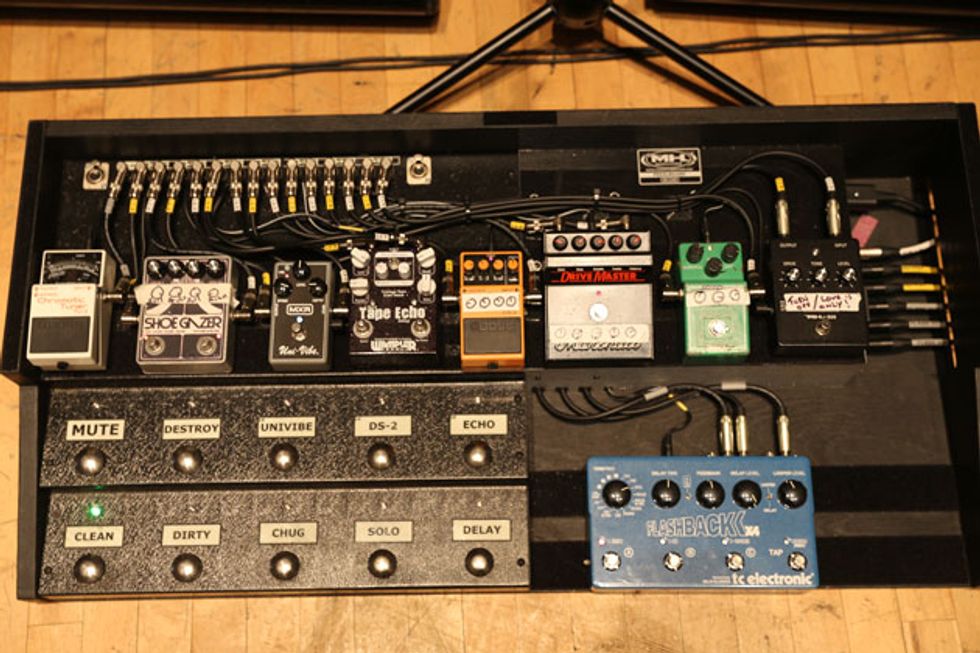
Dan’s tidy board starts with the Boss TU-3 Chromatic Tuner and then goes into Devi Ever Shoe Gazer, MXR Uni-Vibe, Wampler Faux Tape Echo, Boss DS-2 Turbo Distortion, Marshall DriveMaster, Ibanez TS808 Tube Screamer, Mike Hill Services MH-808, and a TC Electronic Flashback X4 Delay. And if you’re wondering what the “Destroy” button on Hawkins’ switcher does—it kicks on both amps, the Wampler Tape Echo, the Devi Ever Shoe Gazer, which is dialed in such a way that Hawkins says, “you’ve never heard anything like it.”
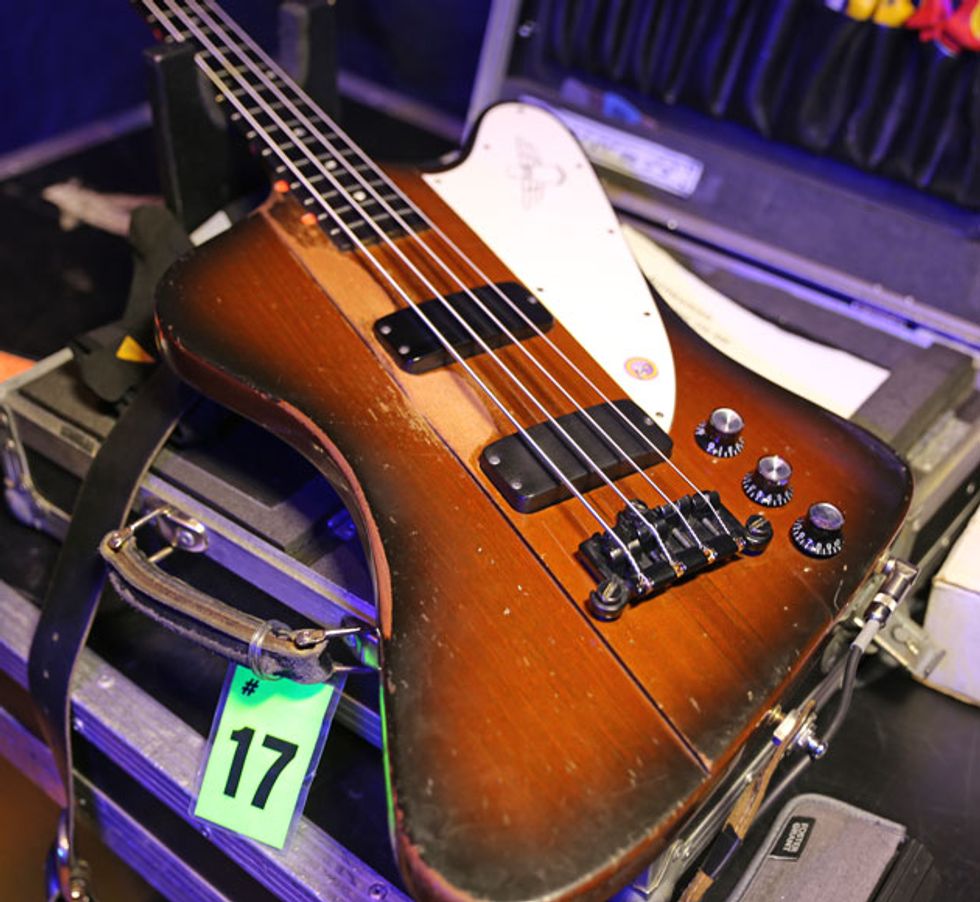
Bassist Frankie Poullain’s main ride is a 1990 Gibson Thunderbird he affectionately calls the “Brown Bastard” that he bought from a guy named Welsh Ray. He favors this beast because the aftermarket pickup “kicks serious ass and is my pride and joy.” (Frankie and his tech can’t figure out where it came from or what model pickup it is.)
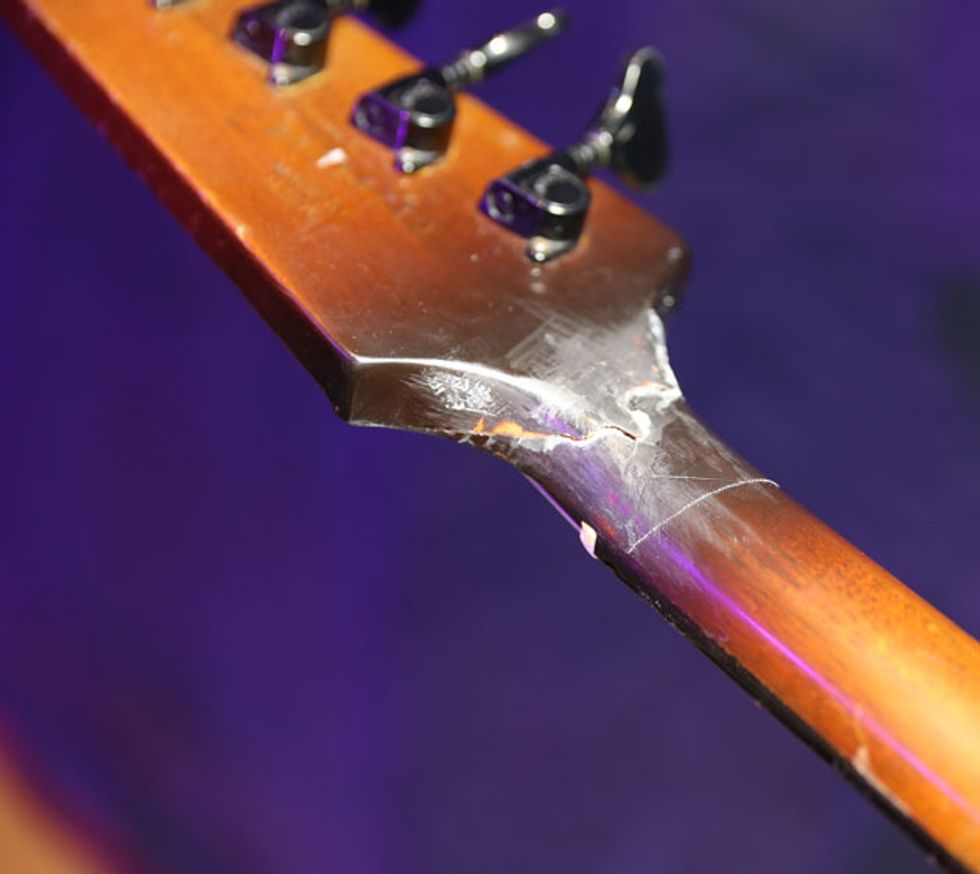
While the Brown Bastard has had issues with its headstock breaking multiple times, Poullain likes it because the awkward body shape is similar to his stature—long and lanky—and he feels the fragility of the headstock gives the bass a human quality.
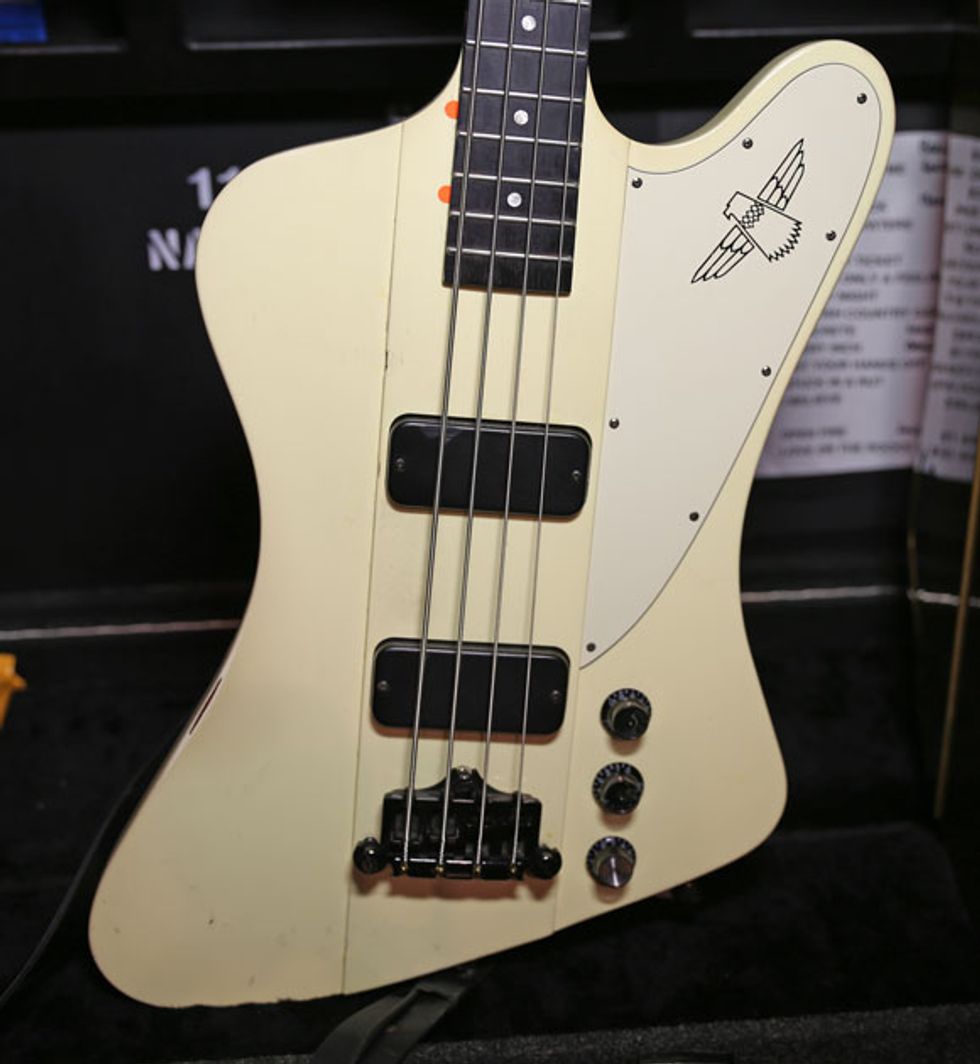
His second Thunderbird is from 2009 and goes on tour with Frankie because it has a consistent, midrange-specific sound.

And his third bass is a 2013 Gibson 50th Anniversary Thunderbird. Fashion-forward Frankie digs this bass because it goes well with his onstage outfits, but he does prefer this 4-string when more top-end is needed. All three are loaded with Ernie Ball Hybrid Slinky Roundwound .045–.105 strings.
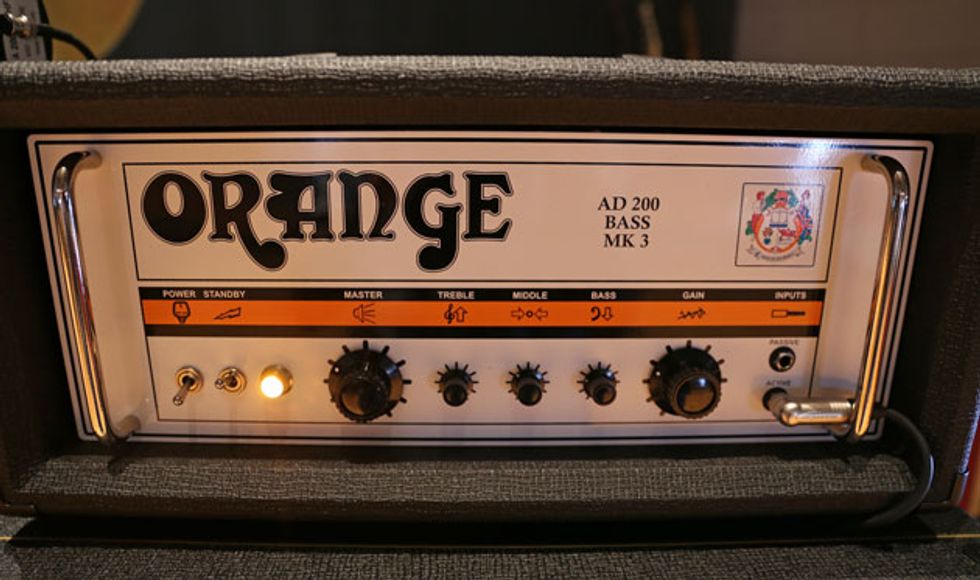
Typically depending on Hiwatt heads for bass amplification, here in the U.S. Frankie has been playing through an Orange AD200 MK 3.
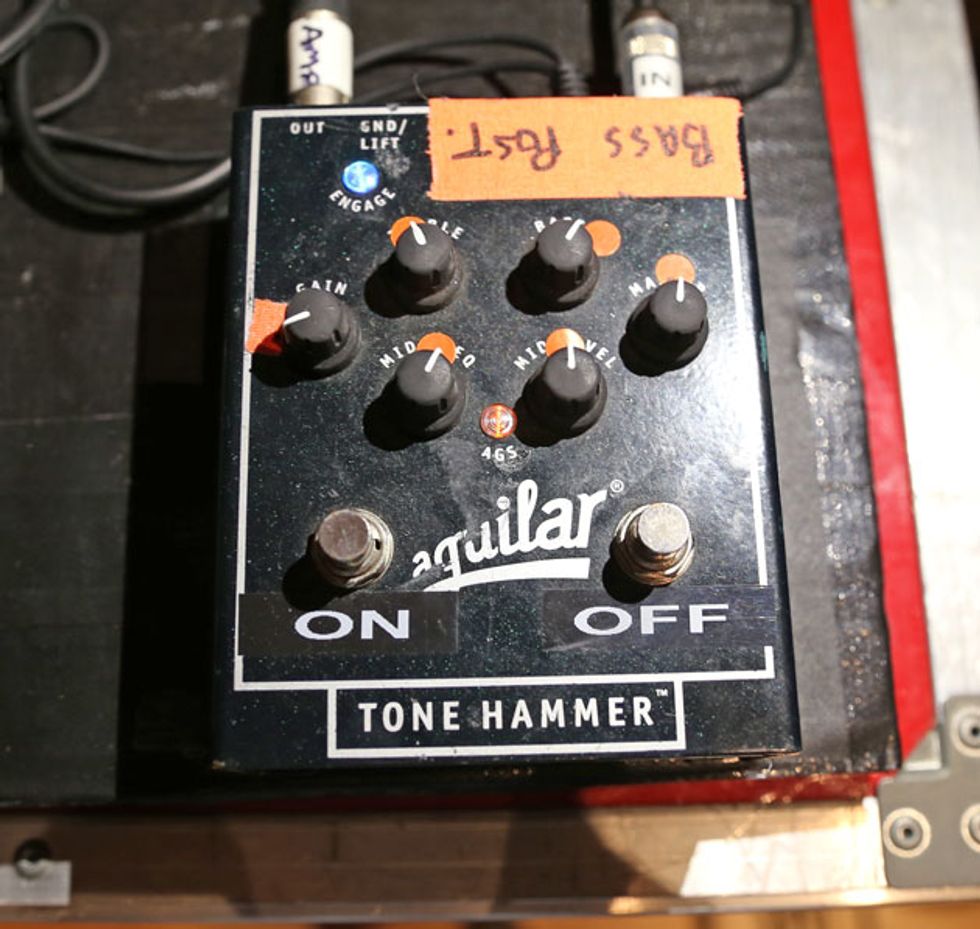
The only pedal in Poullain’s signal chain is an Aguilar Tone Hammer that he uses to add drive and tighten the Orange’s low end.

Lead guitarist and tantalizing frontman Justin Hawkins uses nothing but white 2001 Gibson Les Paul Customs. Seen here is his go-to axe that is generally used most of the night aside from any songs with alternate tunings or if a string breaks.
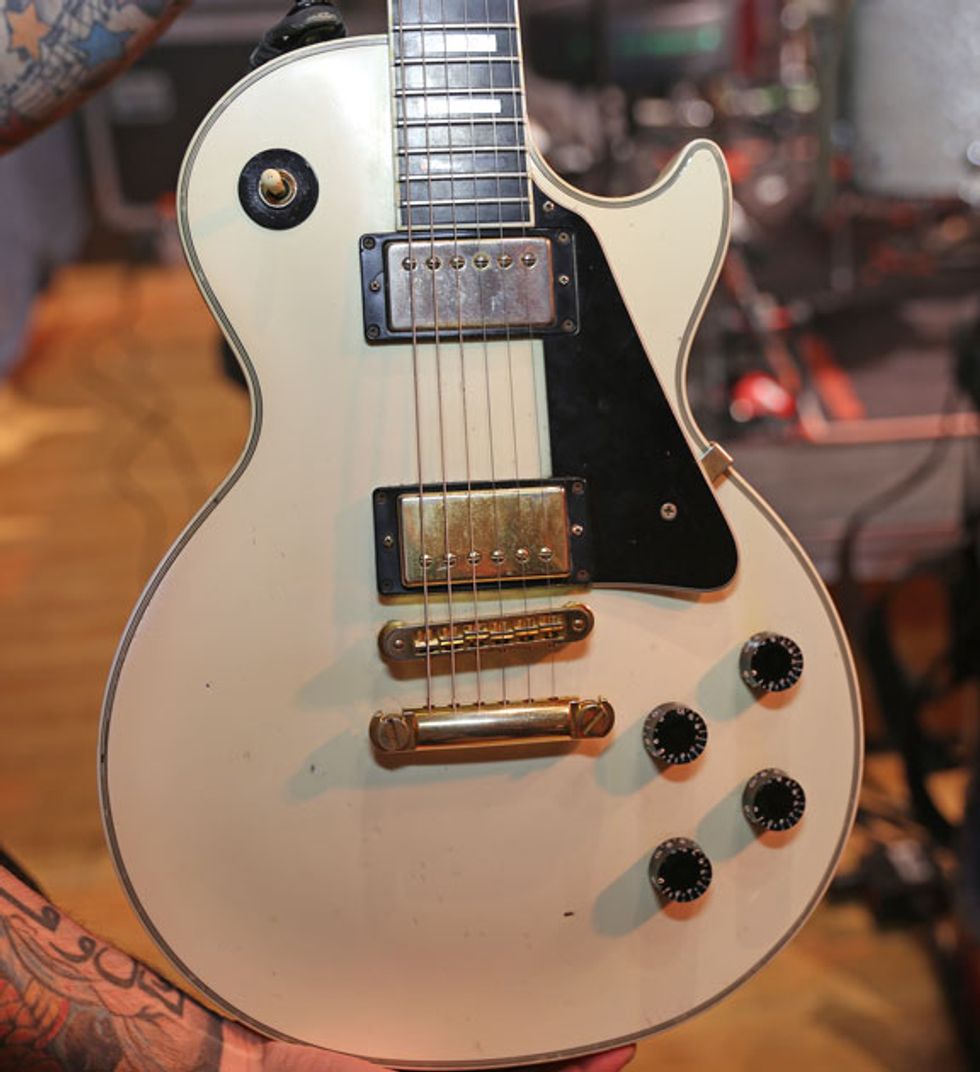
Equally stunning is this matching 2001 Custom that has been relegated to backup duties on this U.S. tour because it has less bite and responsiveness. Both guitars are completely stock, but Hawkins has contemplated adding a sticker to one of them. He’s taking his time making that decision.
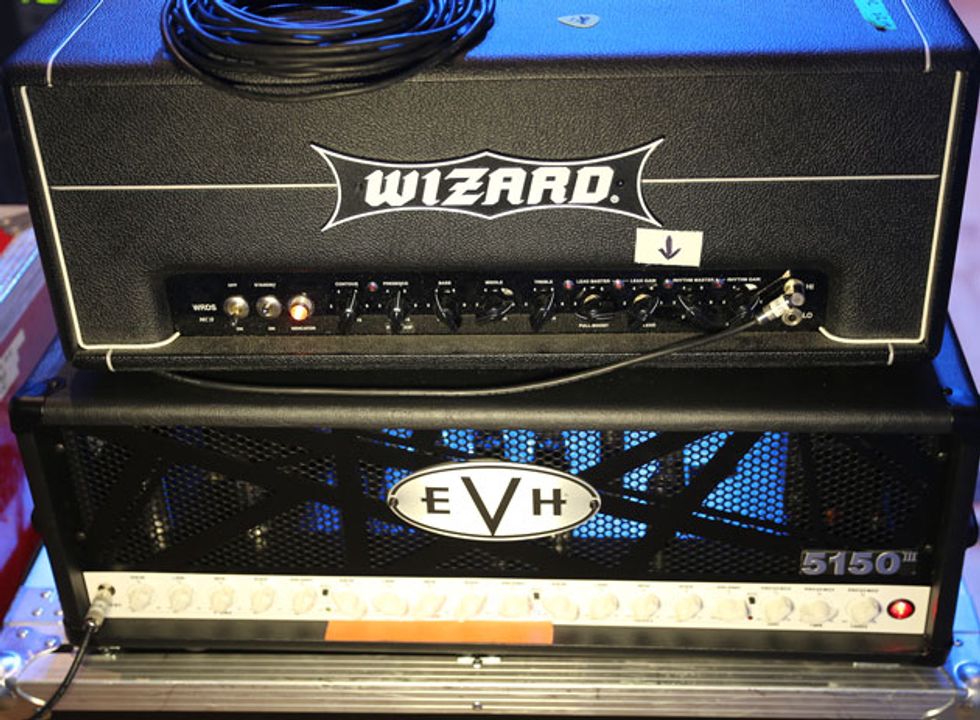
In past years, Justin has relied on a handful of Marshall plexi 1959 Super Lead heads, but was finding that he was adding more and more things to the signal chain to chase the tone in his head. After stumbling upon this Wizard Modern Classic II he was able to go right back to his favorite setup—a LP Custom into a cranked tube head. The EVH 5150 III was a rented backline for the U.S. tour dates and was only used in emergencies or larger venues.




![Devon Eisenbarger [Katy Perry] Rig Rundown](https://www.premierguitar.com/media-library/youtube.jpg?id=61774583&width=1245&height=700&quality=70&coordinates=0%2C0%2C0%2C0)
























































